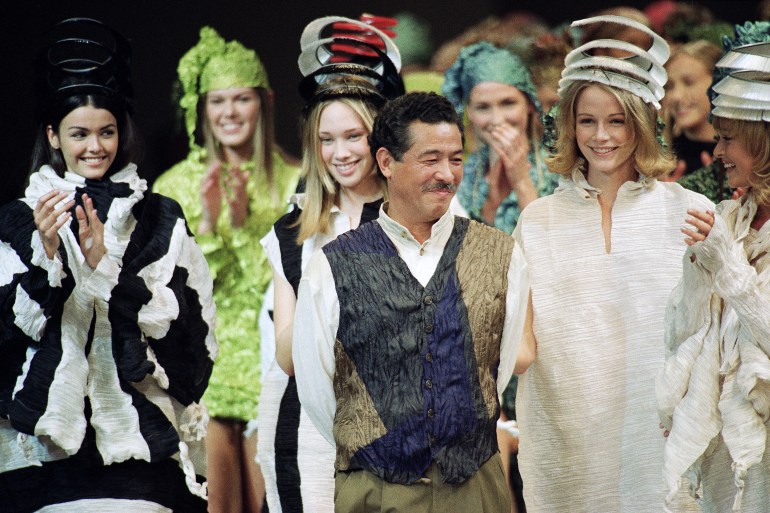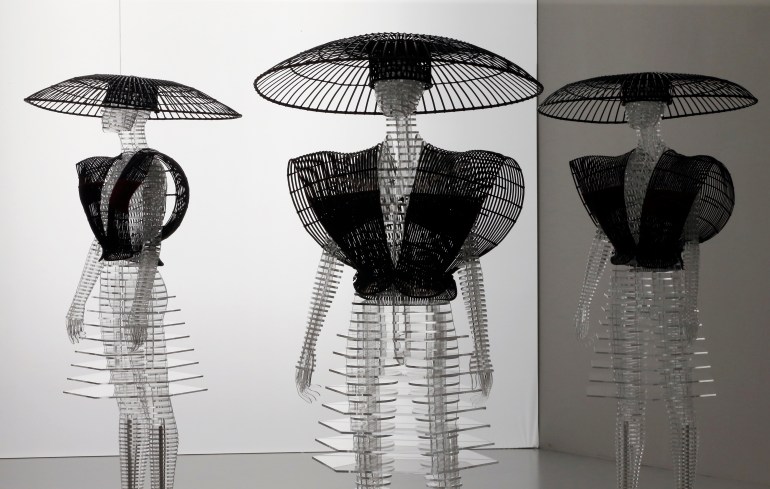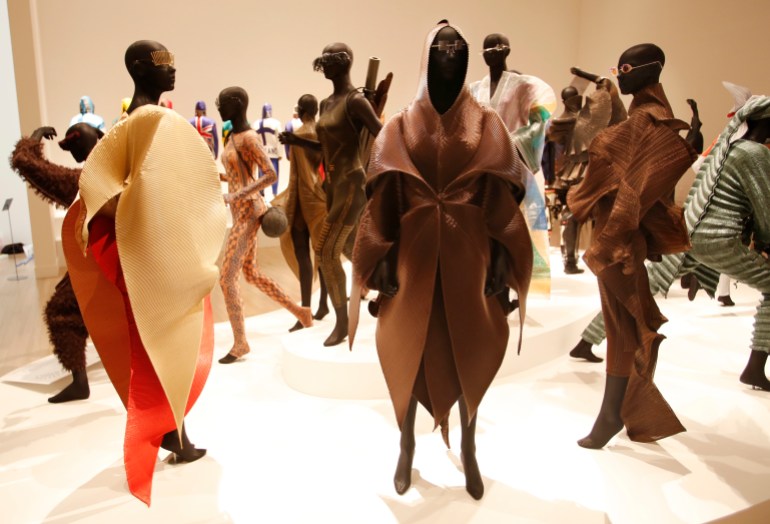Japanese fashion designer Issey Miyake dies from cancer at 84
Miyake pioneered high-tech, comfortable clothing and was part of a wave of Japanese designers who made their mark in Paris.

Japanese designer Issey Miyake, famed for his pleated style of clothing that never wrinkles, has died aged 84, according to media reports in the country.
Miyake, whose name became a byword for Japan’s economic and fashion prowess in the 1980s, died on August 5 of liver cancer, Kyodo news agency said on Tuesday.
Keep reading
list of 3 itemsWhy are giant conglomerates falling out of fashion?
Photos: Chile’s desert dumping ground for fast fashion leftovers
An employee from his office in Tokyo said Miyake’s funeral had already taken place, with “only relatives participating” in line with his wishes. There were no plans for a public ceremony, the employee said.
Miyake, who pioneered high-tech, comfortable clothing during a career that spanned more than half a century, was part of a wave of young Japanese designers who made their mark in Paris from the mid-1970s.
His fashion house nurtured many talented young designers, and was known for innovative and dazzling catwalk shows.

‘Modern and optimistic’
Born in Hiroshima, Miyake was seven years old when the United States dropped an atomic bomb on the city while he was in a classroom. He was reluctant to speak of the event in later life. In 2009, writing in the New York Times as part of a campaign to get then-US President Barack Obama to visit the city, he said he did not want to be labelled as “the designer who survived” the bomb.
“When I close my eyes, I still see things no one should ever experience,” he wrote, adding that within three years, his mother died of radiation exposure.
“I have tried, albeit unsuccessfully, to put them behind me, preferring to think of things that can be created, not destroyed, and that bring beauty and joy. I gravitated towards the field of clothing design, partly because it is a creative format that is modern and optimistic.”

Experimental
Known for his practicality, Miyake is said to have wanted to become either a dancer or an athlete before reading his sister’s fashion magazines inspired him to change direction – with those original interests believed to be behind the freedom of movement his clothing permits.
After studying graphic design at a Tokyo art university, he learned clothing design in Paris, where he worked with celebrated fashion designers Guy Laroche and Hubert de Givenchy, before heading to New York. In 1970, he returned to Tokyo and founded the Miyake Design Studio.
In the late 1980s, he developed a new way of pleating by wrapping fabrics between layers of paper and putting them into a heat press, with the garments holding their pleated shape. Tested for their freedom of movement on dancers, this led to the development of his signature “Pleats Please” line.
He also experimented with materials from plastic to metal wire – and even artisanal Japanese paper.
Eventually, he developed more than a dozen fashion lines ranging from his main Issey Miyake for men and women to bags, watches and fragrances before essentially retiring in 1997 to devote himself to research.
Among his other inventions are the futuristic triangles of his “Bao Bao” bag, and his “A-POC (A Piece Of Cloth)” concept – using computers to cut whole garments with no seams.
He also made more than 100 black turtlenecks for Apple co-founder Steve Jobs.
